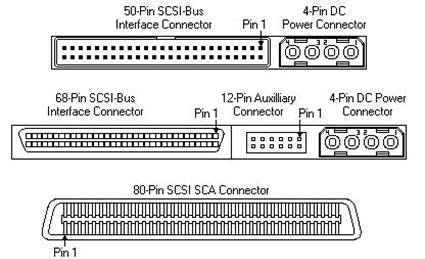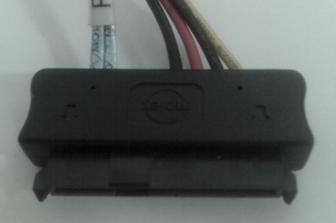Data recovery base – 2. HDD mystery HDD interface
|
1.1.2 hard disk interface
Hard disk interface is a dedicated component connection and a computer hard drive, performance and the ability to expand the system when the computer is connected to other devices that it has a significant impact on the computer. Hard disk drive interface has the following main types.
1. IDE interface
The English called IDE Integrated Drive Electronics, was the most mainstream hard drive interface, including the main interface to optical storage class. After several years of development it has become very mature, cheap, and stable. IDE interface uses a 40-pin or 80-pin ribbon cable to connect the hard drive to the motherboard, each line to connect up to two IDE devices (hard disks or CD-ROM).
Early IDE multifunction card is plugged into the motherboard, then connect the IDE cable. After the function card elimination, is to provide two IDE interfaces on the motherboard, compared to IDE multifunction card, it seemed cheaper and easier to install.
IDE interface is divided into UDMA/33, UDMA/66, UDMA/100, UDMA/133. Late 1996, Quantum and Intel Corporation announced the joint development of a new Ultra DMA/33 EIDE interfaces, and its data transfer rate of 33MB / s, it said UDMA/33, behind UDMA/66, UDMA/100, UDMA/133 named according to above.
In addition, Ultra DMA bus-control mode, the hard disk has a direct memory access controller, can greatly reduce the hard disk during read and write to the CPU occupancy rate, CPU occupancy rate will be from 92% to 52%, which is Ultra DMA is an important role. Of course, to achieve Ultra DMA function, but also needs to support Ultra DMA specifications of the motherboard and the appropriate driver.
All IDE hard disk interface uses the same 40-pin connector, shown in Figure 1.2.
 Figure 1.2 IDE Interface
2. SCSI Interface
The current maximum speed bottleneck computer from the hard disk. Subject to the limitations of the IDE interface, IDE hard disk to improve the speed has become the limit. SCSI (Small Computer System Interface) or "Small Computer System Interface," is a system level interface.
SCSI hard look ordinary hard drive basically the same, but now the maximum speed SCSI hard disk has reached 15,000 rev / min, the average seek time significantly reduce the data transmission rate has been greatly improved. Particularly critical is the SCSI disk CPU utilization is very low, at around 5%. These are made SCSI hard disk performance has greatly improved than IDE drives.
SCSI interface and EIDE interfaces, there is still a lot of technical advantages that the SCSI interface devices can use the data bus for data transmission, and the device connected to the EIDE interface with only one data line alternately (occupied data cable) for transmission; EIDE can connect up to four devices, and SCSI interfaces can connect 7-15 devices.
Currently, there are three SCSI hard disk interface, namely 50-pin, 68-pin and 80-pin. We often see the hard drive models labeled N, W, SCA, is the interface pin numbers.
 Figure 1.3 shows three SCSI hard disk interface schematic.
 Figure 1.3 SCSI Interface
3. SATA Interface
The English name is SATA Serial-ATA (Serial). IDE series are Parallel-ATA (parallel), SATA is a new standard, has now become the mainstream hard drive interface. It has an external interface for faster transfer speeds, more complete data verification measures, the initial transmission rate has reached 150MB / s, the highest ratio IDE UDMA/133 also a lot higher. Since the mutual interference between the switch circuit is small serial signal transmission line, and therefore is greatly improved compared to the original parallel bus, SATA operating frequency. Although the bus width is small, but SATA 1.0 standard can still reach 150MB / s, SATA 2.0/3.0 future upgrade to 300 or even more to 600MB / s. SATA has a more concise and convenient way to connect the layout, in the limited case, more conducive to heat and simple way to connect the internal electromagnetic interference reduced. As shown in Figure 1.4 to SATA hard drive, data cable and power conversion line.
4. SAS Interface
SAS (Serial Attached SCSI) that serial SCSI interface (Figure 1.5) is the next generation of SCSI technology, and now the popular Serial ATA (SATA) hard disk the same, and are based serial technology to obtain higher transmission speed and improved interior space by shortening the connecting lines.
 Figure 1.4 SATA hard drive, data cable and power conversion line
 Figure 1.5 SAS Interface
SAS was developed after the parallel SCSI interface new interface, which is designed to play a storage system performance, availability and scalability, and provides compatibility with the SATA hard drive. It is backward compatible with SATA, specifically, the compatibility between the two is mainly reflected in the physical layer and protocol-compliant layer:
u Serial SCSI Protocol (SSP) for the transmission of SCSI commands.
uSCSI Management Protocol (SMP) is used to connect equipment maintenance and management.
uSATA Tunneling Protocol (STP) used to transfer data between the SAS and SATA.
In agreement with these three, SAS and SATA as well as some can be seamlessly integrated SCSI devices.
SAS system backplane (Backplane) can either be connected with a dual-port, high-performance SAS drives can also be connected to a high-capacity, low-cost SATA drives. So SAS drives and SATA drives can simultaneously exist in a storage system.
 Since the SAS system compatibility, allowing users to use a different hard drive interface needs to meet a variety of applications in the capacity or performance, and therefore have more flexibility in the expansion of the storage system that allows storage devices to maximize investment returns.
In the system, each SAS port can connect up to 16 256 external devices, and SAS to take direct point to point serial transmission, the transmission rates of up to 3Gb / s, estimate that I will have 6Gb / s or even 12Gb / s of high-speed interface appears.
SAS interface also made a big improvement, it also offers a 3.5-inch and 2.5-inch interface, it is possible to fit the needs of different server environments. SAS relies on SAS expander to connect more devices, the current 12-port expander to the majority, but according to the display board manufacturers product development plans, there will be the introduction of 28,36 port expander to connect SAS device, the host device or other SAS expander.
And compared with the traditional parallel SCSI interface, SAS has been significantly improved not only in the interface speed (now mainstream Ultra 320 SCSI speed of 320MB / s, while SAS has just started to reach the speed of 300MB / s, the future will reach 600MB / s or higher) , but thanks to the serial cable connection can not only achieve longer distances, but also to improve anti-jamming capability, and this thin cable can also significantly improve heat dissipation inside the chassis.
5. IEEE 1394 Interface
IEEE 1394 hard disk is not a dedicated interface, but it can be easily connected 63 different devices including hard drives, including, and supports plug and play and hot swappable. In the data transmission rate, IEEE 1394 can provide 100MB / s, 400MB / s, 1.2GB / s high-speed third gear transmission rate, is now all hard unmatched.
|

